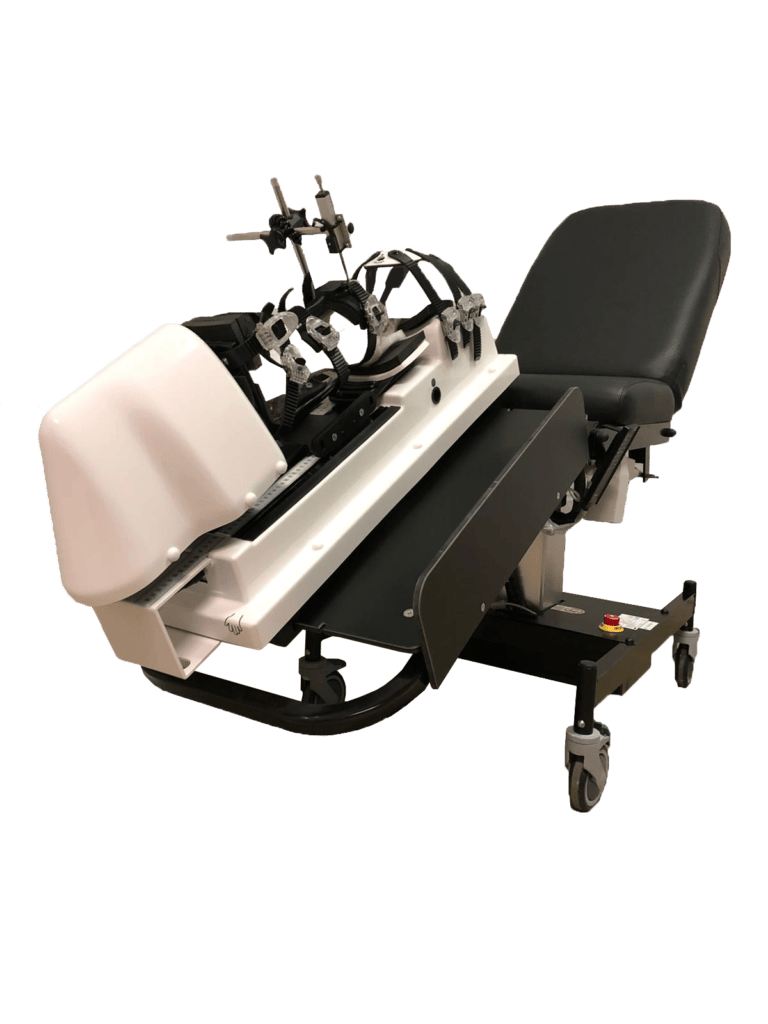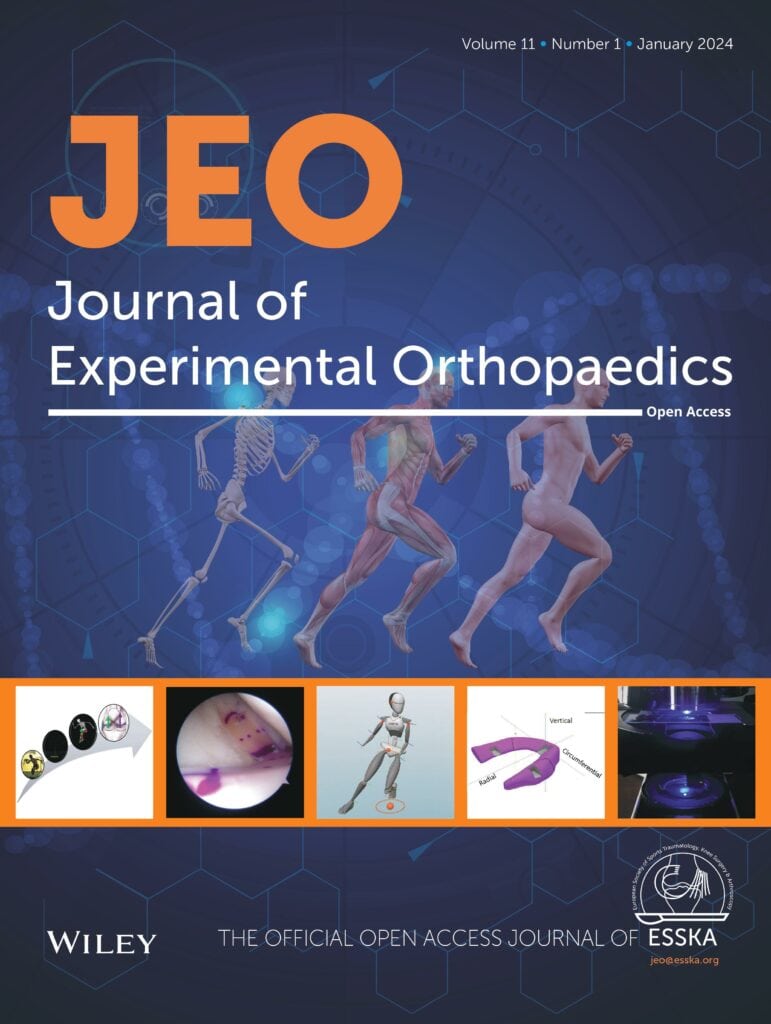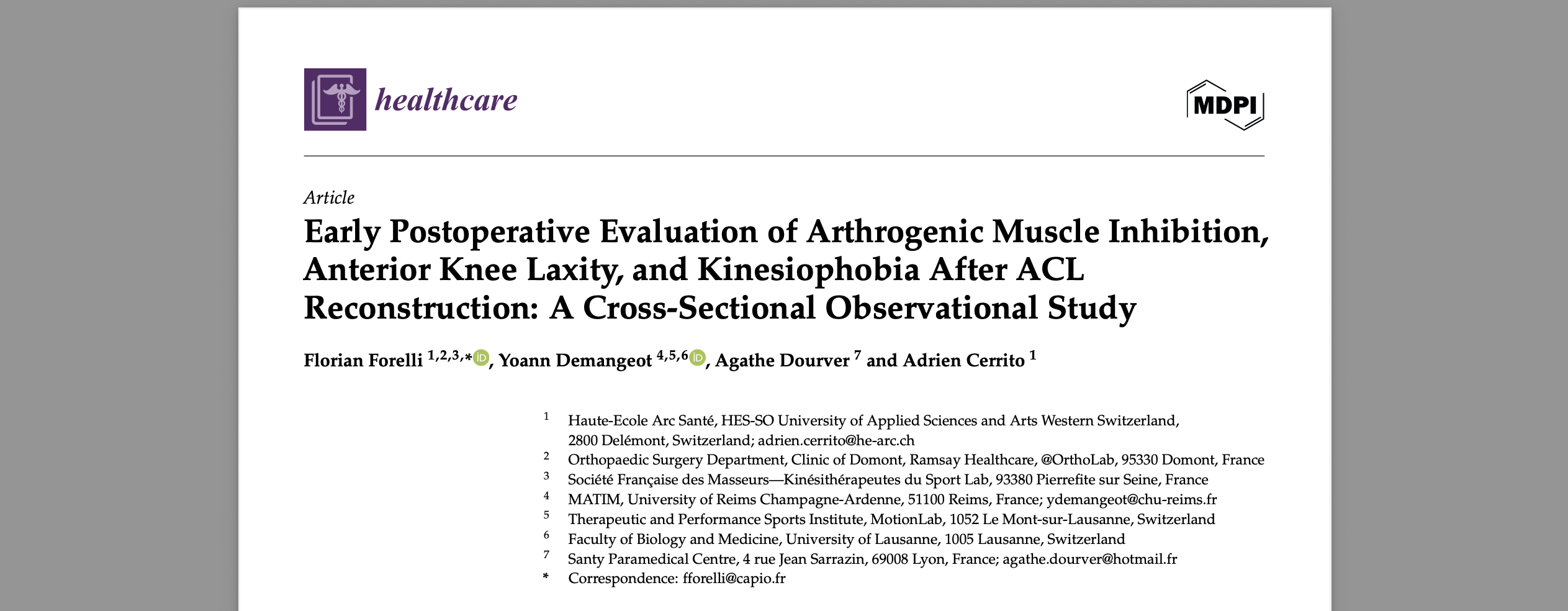Study title: Intra‐rater and inter‐rater reliability of robotic arthrometer DYNEELAX®
DOI: 10.1002/jeo2.70026
The following article is about Dyneelax Reliability. The DYNEELAX® arthrometer represents a significant advancement in the field of orthopaedic diagnostics, particularly in the assessment of knee laxity. Knee injuries, especially those involving the anterior cruciate ligament (ACL), are among the most prevalent and challenging to manage, often leading to long-term functional deficits if not accurately diagnosed and treated. Traditionally, measuring knee laxity—both anterior and rotational—has proven difficult, with conventional methods primarily focusing on anterior-posterior movement. This oversight neglects the critical role of rotational stability, which is essential for maintaining overall knee function. The DYNEELAX® is one of the first devices to integrate measurements of both anterior and rotational laxity, offering a more comprehensive understanding of knee joint integrity and enhancing the clinician’s ability to assess and manage knee injuries effectively.
The significance of reliable measurement tools (Dyneelax reliability) in orthopaedics cannot be overstated, particularly in the context of ACL injuries. The ACL not only prevents anterior tibial translation but also plays a crucial role in controlling rotational movements of the knee. Failing to address both planes can lead to incomplete assessments and a heightened risk of re-injury or long-term complications like knee osteoarthritis. The DYNEELAX® arthrometer addresses these challenges by allowing clinicians to evaluate knee stability in a holistic manner, improving diagnostic accuracy and informing rehabilitation strategies. With proven intra-rater and inter-rater reliability in clinical trials, particularly for rotational laxity, the DYNEELAX® is poised to become an essential tool in both clinical practice and research, advancing the standard of care for knee injuries.
Overview of the DYNEELAX® Knee Arthrometer
The DYNEELAX® arthrometer represents a significant advancement in robotic arthrometry, specifically designed to measure both anterior and rotational knee laxity in a single device. Unlike traditional arthrometers that primarily focus on anterior-posterior movement, the DYNEELAX® enables simultaneous evaluation of both types of laxity, eliminating the need for patient repositioning during tests. This innovative approach not only enhances the efficiency of the assessment process but also reduces variability that can occur with multiple testing protocols. By providing clinicians with a more streamlined and consistent method for evaluating knee stability, the DYNEELAX® ensures greater accuracy in diagnosing knee injuries, particularly those involving the anterior cruciate ligament (ACL).
Equipped with advanced sensors and a robust mechanical design, the DYNEELAX® arthrometer can apply controlled forces of up to 200 N for anterior assessments and torques of up to 8 Nm for evaluating rotational laxity. This capability allows for a comprehensive analysis of knee stability, which is crucial for patients with complex injuries or those undergoing ACL reconstruction. The integrated software provides real-time feedback, displaying immediate measurements and calculations that facilitate informed decision-making. The implications of the DYNEELAX® in clinical practice are substantial, enabling orthopaedic surgeons and physiotherapists to monitor post-surgical recovery more effectively and tailor rehabilitation programs based on objective data. This comprehensive assessment ultimately aids in ensuring the integrity of the knee joint and determining a patient’s readiness for a safe return to physical activity.

Dyneelax Key Features and Dyneelax Reliability
One of the standout features of the DYNEELAX® is its ability to evaluate knee stability across multiple planes, a significant advancement over earlier arthrometers. In a recent study, the device was tested for its intra-rater and inter-rater reliability. In healthy subjects, the DYNEELAX® demonstrated good to excellent intra-rater reliability for rotational laxity and moderate reliability for anterior laxity. The reliability of this device, particularly for rotational knee laxity, is a vital contribution to orthopaedic diagnostics, as rotational stability plays a crucial role in ACL integrity.
The study revealed intraclass correlation coefficients (ICC) for anterior knee laxity ranging from 0.631 to 0.699 for intra-rater assessments, and 0.578 to 0.646 for inter-rater reliability. For rotational laxity, the intra-rater ICC values ranged from 0.916 to 0.94, while inter-rater reliability ranged from 0.822 to 0.933. These findings confirm that the DYNEELAX® arthrometer is a highly reliable tool for measuring knee laxity, particularly in rotational aspects, which are often difficult to assess accurately with conventional methods.
Clinical Significance
The ability to accurately measure anterior and rotational laxity in one device offers a more comprehensive assessment of the knee’s intra-articular structures. In clinical practice, assessing both anterior and rotational knee laxity is essential for understanding the full extent of a knee injury, especially when dealing with complex ligament injuries like an ACL tear. Many existing devices focus solely on anterior tibial translation, which provides an incomplete picture. The DYNEELAX®, by also measuring rotational movement, can detect functional deficits that may go unnoticed with traditional tools.
In cases of ACL injuries, the measurement of both anterior and rotational laxity is particularly crucial. The ACL not only resists anterior translation but also plays a significant role in controlling tibial rotation. Without assessing both planes of movement, clinicians may overlook subtle instability, which can delay return to sports or lead to long-term complications like osteoarthritis.

Study Design and Results
The study assessing the reliability of the DYNEELAX® arthrometer involved 73 healthy participants, with a balanced representation of both males and females. The participants underwent a series of tests to evaluate both anterior and rotational knee laxity. The testing protocol was designed to mimic real clinical scenarios, ensuring that the results could be directly applicable to patient care.
In addition to ICC values, the study also calculated the standard error of measurement (SEM) and minimal detectable change (MDC), key metrics for evaluating the clinical utility of the device. The MDC values observed were mostly smaller than the clinically significant thresholds for anterior laxity, confirming the DYNEELAX®’s utility in detecting even subtle changes in knee stability. The study also revealed that the device was able to identify sex differences in rotational laxity, with females demonstrating greater laxity than males—a finding that aligns with previous research on knee joint mechanics.
Implications for Future Research and Clinical Use
The DYNEELAX® arthrometer holds significant promise for advancing clinical practice and research in orthopaedics. Its ability to measure both anterior and rotational laxity provides a comprehensive view of knee stability, making it an invaluable tool for surgical planning in ACL injuries. Surgeons can use the precise measurements from the DYNEELAX® to assess the severity of injuries and instability, allowing for tailored surgical approaches that address both anterior translation and rotational instability. This targeted strategy can enhance surgical outcomes and improve patient satisfaction.
In addition to its diagnostic and surgical planning capabilities, the DYNEELAX® arthrometer is positioned to enhance rehabilitation protocols. By tracking both types of laxity over time, clinicians can monitor patient progress more effectively, ensuring timely and safe returns to sports or high-impact activities. Future research could focus on establishing normative data and correlating laxity measurements with functional outcomes, further validating the clinical utility of the DYNEELAX®. Overall, integrating this advanced arthrometer into clinical practice could revolutionize knee injury assessment and management, fostering improved surgical and rehabilitation outcomes while paving the way for innovations in orthopaedic diagnostics.
Conclusion
In conclusion, the DYNEELAX® arthrometer has proven to be a reliable and effective tool for measuring both anterior and rotational knee laxity. Its ability to provide comprehensive data on knee stability in multiple planes makes it a valuable addition to the field of orthopaedic diagnostics. As further studies are conducted, this device has the potential to become a standard tool in knee injury assessment, surgical planning and rehabilitation.
Medical References
Mihalinec, K., Martinez‐Cepa, C.B., Zuil‐Escobar, J.C., Kejžar, N., & Vauhnik, R. (2024). Intra‐rater and inter‐rater reliability of robotic arthrometer DYNEELAX®. Journal of Experimental Orthopaedics, 11, e70026. DOI: 10.1002/jeo2.70026







